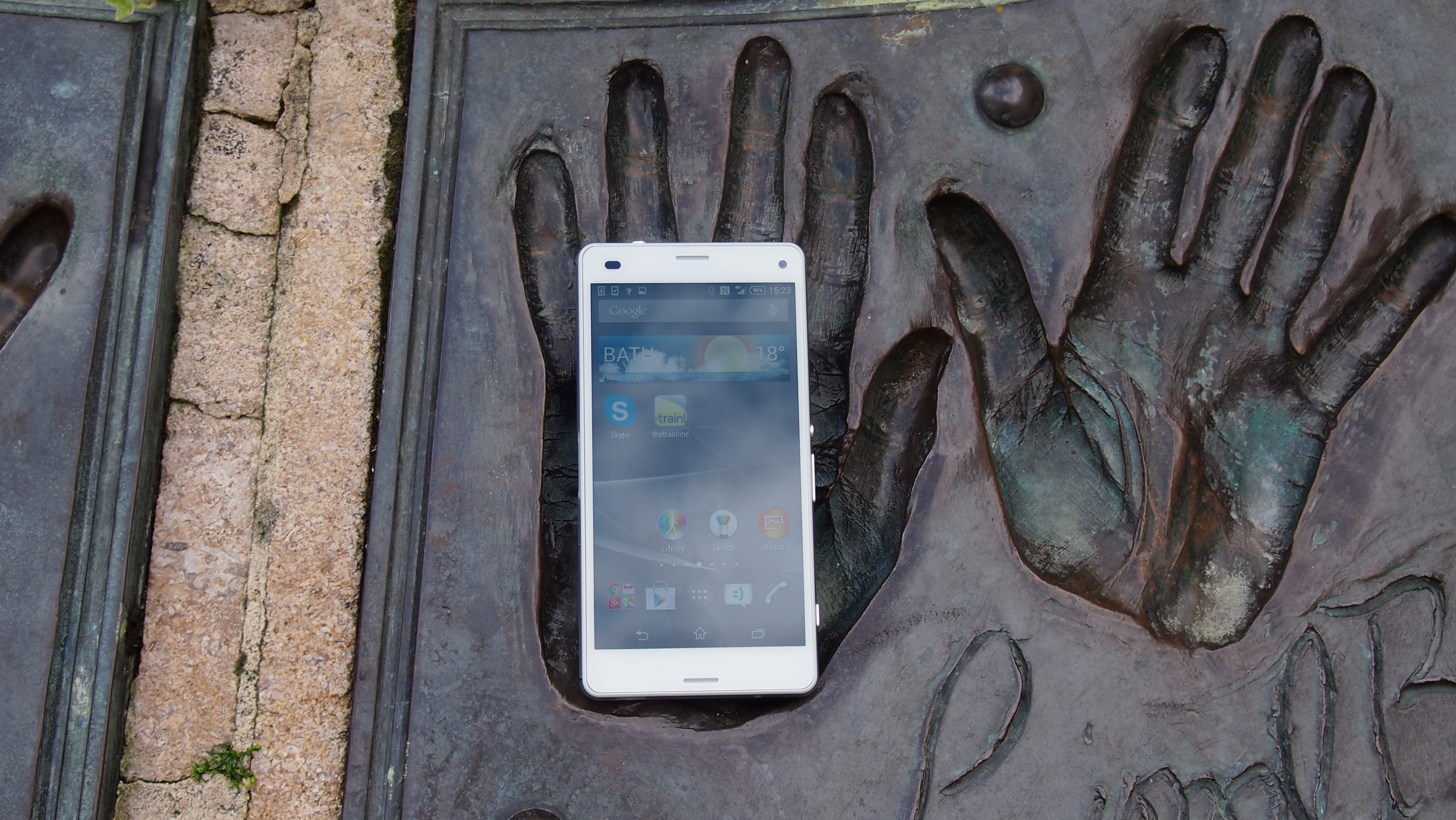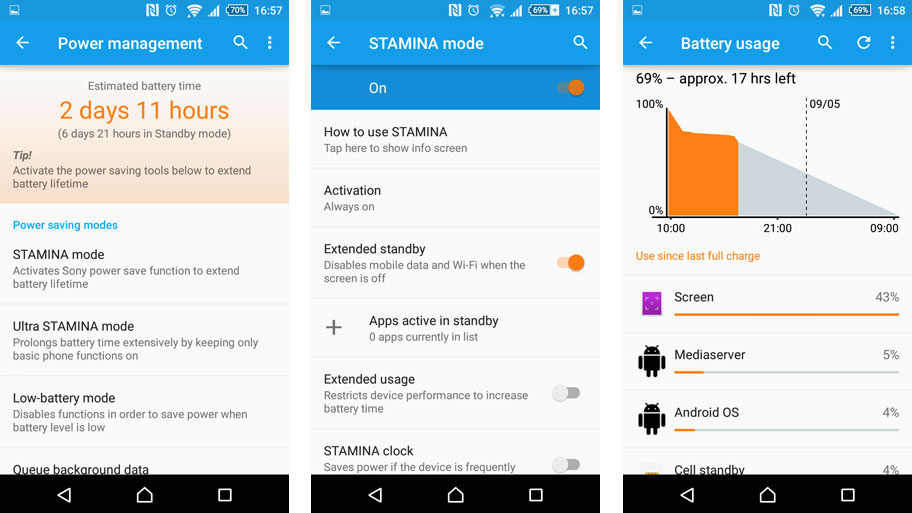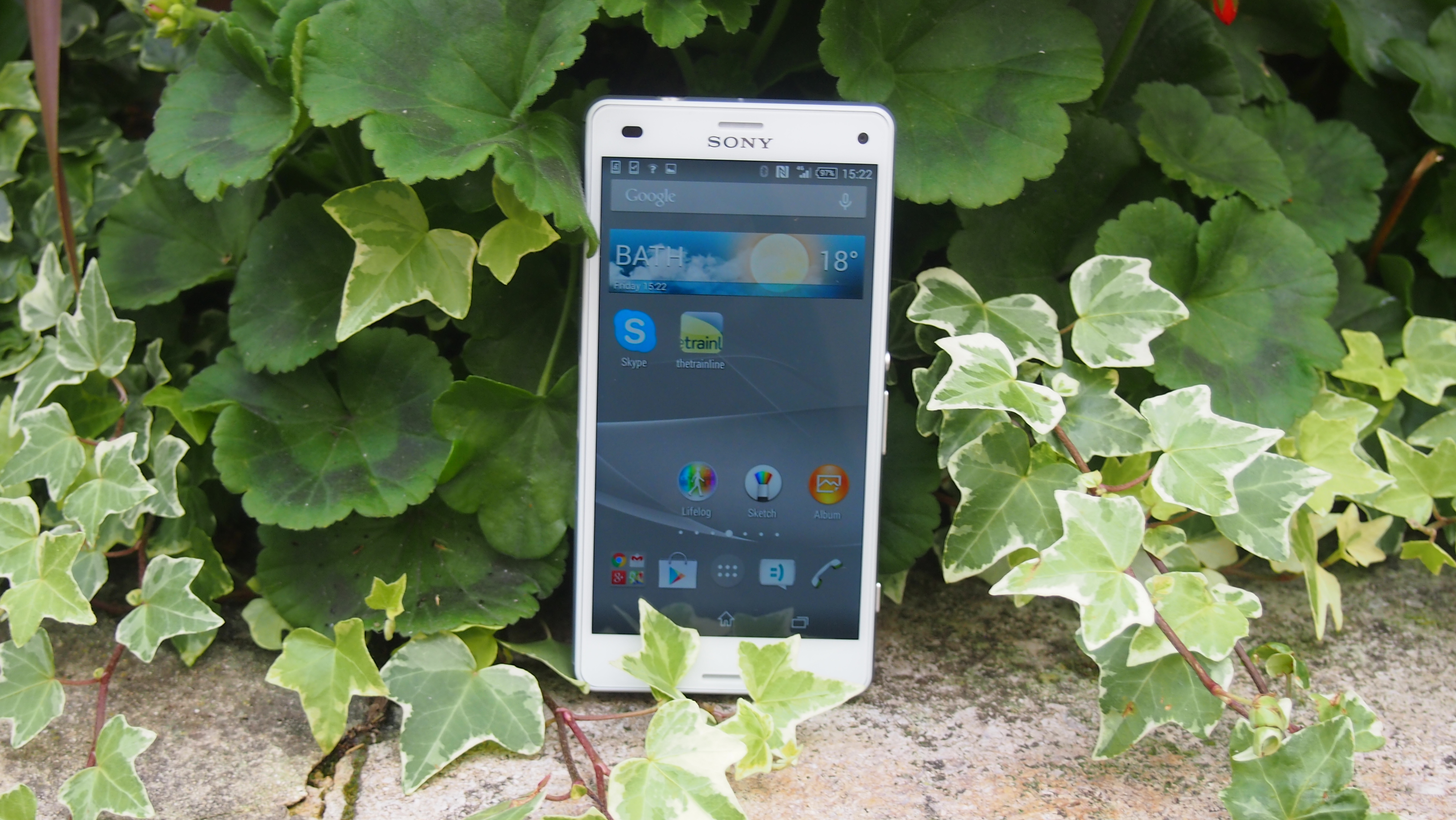Why you can trust TechRadar
Performance-wise the Xperia Z3 Compact is pretty impressive. Sony has done a good job with fitting a lot of the Xperia Z3's hardware into the smaller body of the Z3 Compact. The 2.5GHz quad-core Snapdragon 801 processor means that on paper the Z3 Compact can go toe-to-toe with some of the most powerful smartphones on the market today.
The GeekBench 3 benchmarks I ran to test the handset's prowess came back with scores of 949 for single core performance, and 2760 for multi-core. While single core performance bested the Samsung Galaxy Alpha's 933 score, the Samsung did better with multi-core processing with a score of 3,082.

Meanwhile the Z3 Compact was just shy of the HTC One M8's score of 2,899. The last Xperia Compact variant Sony released was the Sony Xperia Z1 Compact (the Xperia Z2 was never granted a little brother), which averaged scores of 2,884, interestingly slightly higher than the Z3 Compact's score.
It should be noted, however, that my Z3 Compact tests are with the Android 5.0 update, while all of the other tests were run on older versions. All that should be taken away from them, then, is that the Sony Xperia Z3 Compact runs about as quickly as any 2014 flagship phone.
Benchmarks may give us a good idea of how well a device performs, but they don't give the whole story. What really matters is how well the device behaves when you're using it for day to day tasks, and in this respect the Xperia Z3 Compact again does very well.
The quad-core processor along with 2GB of RAM keeps Android 5.0.2 with Sony's custom overlay feeling snappy and responsive. Throughout my time with the Xperia Z3 Compact I never noticed the phone feel laggy or slow.
The extra RAM meant that the Z3 Compact didn't have to reload apps or webpages every time I opened up something different, which meant I could switch back and forth between apps quickly.
The only time that the Z3 Compact's performance faltered was when using some of the more intensive camera modes. I'll go into each mode in more detail later, but there are a number of augmented reality modes that can be applied to your photos and videos.
These modes place animated effects, such as fires and even dinosaurs, into your photos. These effects require a lot of processing power, and after using them for too long (which appeared to be more than five minutes), the phone would heat up and the camera app would sometimes shut down, returning me to the home screen.
These effects, by their very nature, aren't supposed to be used often or for long periods of time, so it's not a major concern. However it is a shame to see such poor performance alongside the Xperia Z3 Compact's generally excellent user experience.
Graphics are driven by an Adreno 330 GPU, which is the same that's found in the Xperia Z3. Game performance was very good, with the Z3 Compact handling a number of graphically intensive games such as EA's Real Racing 3, with aplomb. Fast-paced 2D fare like Retry runs like a dream too, and looks particularly vibrant on the Z3 Compact's screen to boot.

Along with the vibrant screen, all the games I tried looked and performed excellently. Due to the fact that the Z3 Compact has the same GPU as the Z3, but with a lower resolution, it could be argued that the Z3 Compact will actually give a better experience, at least framerate wise, compared to its bigger brother.
However, if you want to play games on a bigger screen at full 1080p resolution, you may be happy to take the odd hit to framerate and go with the Z3.
Battery life
The Sony Xperia Z3 Compact comes with a decent 2,600mAh battery, which according to Sony results in a talk time of 14 hours and a standby time of 920. In reality, I found that the battery lasted a decent two days with medium to slightly heavy use. This involved browsing the internet on both Wi-Fi and 4G, listening to music and playing games.
On lighter use I was pleased to see the Xperia Z3 Compact manage three days without the need to charge. I did notice that the Z3 Compact's battery usage seemed a little erratic after the Android 5.0 update, with an extremely fast initial discharge rate that slowed significantly after a while.
Whether this was an issue with the software, a certain unoptimised background app, or something else, I'm not sure. The fact that the phone ultimately lasts through two days fairly consistently means that this isn't a massive issue.
When the battery reaches a certain level, the Xperia Z3 Compact suggests you switch to stamina mode. When the stamina mode is enabled the Z3 Compact will disable Wi-Fi and mobile data connections while the screen is off, as well as lowering the performance of the phone's hardware to preserve power. This could also be of use if you find the handset is getting too warm when in use.

The stamina mode can be customised to some degree, such as selecting apps that you want to keep active even with stamina mode on, and a mode that helps save power if you use the Z3 Compact regularly to check the time.
With Stamina mode activated, I was able to prolong the battery life for around an additional day, though this was with very light use. When using the Xperia Z3 Compact more intensively Stamina mode failed to provide such an impressive improvement.
Instead, battery life was extended by only a few hours. Because Stamina mode concentrates on turning off app connectivity when the phone is asleep, if the phone is kept awake with near constant use, Stamina mode doesn't get a chance to fully kick in.
Whilst the Z3 Compact was in Stamina mode I didn't notice any performance decreases from the handset whilst in use.
So while Stamina mode can eke out more battery life when the phone is left alone, when used constantly it doesn't help that much. This means there's not too much improvement over the Z3 Compact's standard battery life, which is impressive enough on its own.
There is an ultra stamina mode as well, which severely restricts the Z3 Compact's features to prolong battery life. Essential features such as calls, texts, calendar and even camera are supported, with Sony's estimates showing that enabling the mode will give the Z3 Compact a battery life of over a week.
Some will be a little disappointed to see that the battery is non-replaceable, however. While this might not be the top of everyone's must have list, some like the security of knowing that they can replace the battery in the future.
In our battery test, where we have a high definition video playing full brightness, the Xperia Z3 Compact's battery was 79% after 90 minutes.
This was much higher than the full size Xperia Z3, which using the same test was left with just 31% of its battery. The Galaxy S5 Mini's battery depleted to 84% during the test, whilst the iPhone 6 held on to 74%.
Though I was impressed with how the Z3 Compact kept its battery from depleting too quickly, I was less impressed with how long it took to recharge the phone. Even with the supplied charging block the battery took a while charge compared to other phones, especially the iPhone 6.
Current page: Performance and battery life
Prev Page Interface and performance Next Page The essentials
Matt is TechRadar's Managing Editor for Core Tech, looking after computing and mobile technology. Having written for a number of publications such as PC Plus, PC Format, T3 and Linux Format, there's no aspect of technology that Matt isn't passionate about, especially computing and PC gaming. He’s personally reviewed and used most of the laptops in our best laptops guide - and since joining TechRadar in 2014, he's reviewed over 250 laptops and computing accessories personally.
